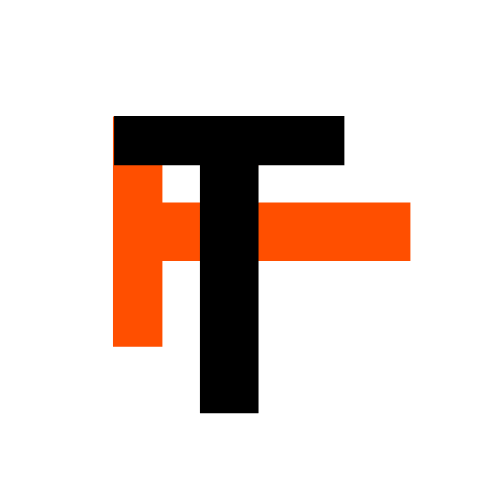Every freelancer had to start somewhere. No matter the dazzling portfolios or years of work experience touted by freelancers online, for everyone in this space, it began with their first client.
This guide is for those of you who would like to get into the freelance arena, and want to know where to begin.
Becoming a freelancer without any prior experience requires you to develop an understanding of the marketplace where you will presenting your service offering, setting up brand touchpoints for clients to find and contact you, showcasing your talent with an ever-growing portfolio, and finally building processes to streamline your day-to-day activities and marketing your services.
I’ll guide you through the basics step-by-step.
If you’re already dabbling in freelance projects or have several side projects which showcases your proficiency and capability in your area of expertise – then check out our 4 Easy Easy Steps To Become A Freelancer post which will help you transition to freelance work right away.
Research Your Market
What are your hobbies, skills? Can you write? Can you design eye-catching graphics? Can you do video-editing or voice-overs? Can you offer tutoring for a particular subject?
Knowing what you’re good at and where you are willing to invest your time and effort is your first priority. Some freelancers jump onto freelance job boards start working on different types of projects interchangeably. This is the wrong approach.
The key to becoming a successful freelancer is to hone in on your skills and build a good track record of performance.
Once you’ve noted your skillset, head on over to any large freelance network like Fiverr, and do a quick search for what you’re offering. You will be doing a competitive analysis where you’ll be identifying the rates freelancers are charging and exploring their unique service offering packages to develop your own.
Develop Your Service Offering
This needs to be adaptable. Different projects require different approaches. In the world of freelancing, there are different ways to charge for your services, some prefer hourly rates, while others sell complete packages.
For an example, we can look at a freelance content writer. As a writer your time will be spent researching, writing and editing your articles. Knowing how much time you spend on average per article for example, will help you determine your rates.
For example, if your goal is to earn R30,000.00 per month as a freelance content writer, and you charge R1,000.00 per article, you would need to produce 30 articles on a monthly basis, around 1 per day.
But, let’s say you charge R2.00 per word, and your average article ends up at around 1000 words, then you could earn R2,000.00 per article, requiring you to only produce 15 articles per month to hit your desired goal of R30,000.00 per month. As your portfolio grow’s you will be in a position to increase your rates.
It is for this reason, why it is important to explore what other freelancers are offering and the rates they are charging, so that you can determine you’re potential and position yourself for success.
Know you’re offering, know your rates, and know where to promote your services.
Streamline Your Brand Touchpoints
A freelancer you can’t reach, is no good. It is important to have a decent social media presence, paired with the relevant contact points so that prospective clients.
Be Social
LinkedIn – This is the go to network for finding potent clients, and where potential clients can follow you. Make sure to complete your profile and post your work regularly. You can also create a LinkedIn Business Page to separate your freelance activities from your personal profile. Additionally, keep an eye on job opportunities by or employers looking for freelancers with LinkedIn Jobs.
Twitter – A lot of freelancer I know, especially those with a constant influx of clients a lot spend time on Twitter. Not only is Twitter a great way to share your work, but you can liase with other freelancers, follow job posters and be the first to apply for any freelance gigs. Twitter is a great social media network to follow the leading freelancers in your industry and learn from their work.
Instagram – If you’re a creator – then Insta is a must. share your designs or work in various media formats and stand out on the social media platform meant for highlighting creativity.
YouTube – YouTube is probably the least used and most underrated brand touchpoint for freelancers. Often times when we’re struggling with something, we turn to YouTube to find the answers. This is a key place where you can provide solutions and offer your services.
Social media is where others will find you, and share your work. For example, you could be a freelancer offering web development jobs, and create YouTube tutorials on coding. Perhaps someone looking to build a website finds your video, and is impressed with your work – they may then be able to approach you to work together.
Non-negotiable contact touchpoints are:
Phone no. – You need a phone no. to engage in client work, and sometimes it’s best to have a separate phone no. just for business conversations.
Email – Email is really important, and having a professional email account goes a long way in presentation. A Gmail address is fine, but something on your own domain name is even better.
Showcase Your Talent
As you take on clients and add projects to your resume, you should continually add your work to a portfolio, so that you can share it with new prospective clients. This builds trust and confidence in the services you are offering, and makes the selling process just a little bit easier.
You can create your portfolio for free with tools like Microsoft Word or Google docs – but remember to share it as a PDF, especially if you have done a lot of formatting, and wish it to always look the same regardless of what app a client uses to checkout your portfolio.
Once you’ve created your portfolio remember to share it, add it to your profiles. Pro tip: upload your portfolio to your Google Drive, and share the link to it. If you add the link on your social media platforms, make sure to set your sharing settings to public, otherwise clients will have to request access.
Your portfolio can also be a website. There are many easy-to-use website builders online where you can create stunning portfolios. Sharing a personal portfolio website with prospective clients speaks volumes about the attention-to-detail and effort you’re willing to put into your work. Your website can also be an additional marketing front to get more clients (more on this later).
Build Processes
The number 1 benefit of being a freelancer is in the flexibility it offers you. You don’t have to work from 9 to 5. you can work when you want, and the volume of work your take on is up to you.
Nevertheless, several tasks become routine, such as onboarding new clients, introductory calls, invoices and account statements and overall project management. The more you can develop into a process, the easier your life will be.
As you grow in your freelancing journey, set up templates and build a workflow that gets things done time after time. Explore blogs by and resources from other freelancers and learn from other’s mistakes and their successes.
Start Marketing
Promote Your Services Wherever Possible. Getting your first clients can feel daunting, but it’s necessary to build your portfolio and put money in your pocket. First and foremost, you should be promoting your work and services on social media platforms, and free freelance platforms.
When you deliver good services, your clients are likely to recommend your work to others. Word-of-mouth can do wonders for a freelancer.
A professional website can be designed for under R1,000.00 for your portfolio. Some website builders are even free, you’ll most likely only pay for a domain name and hosting. If you can afford it, you should make it a priority. A website can do wonders for your marketing efforts.
You could create web pages for all your client work, present case studies or blog about topics in your industry. As more people discover your work, a few might be interested in becoming your clients.
If you have a few extra cents available, explore paid advertising channels and look to stand out among your competition. Reach people right when they are searching for your services with Google Ads or stand out among a client’s feed on Facebook with Meta Ads.
You don’t need any money to get started as a freelancer, just the right mindset, and time, and effort.
In The end, becoming a freelancer is akin to starting an online business. It requires hard work and generally a lot of client interaction. On the Brightside, the payoff could make it all the more worthwhile.
I mean, doesn’t being your own boss sound good!?

